I DJI Mini 2 are the microphones to beat?
Probably yes.
The new generation not only confirms the excellent qualities of its predecessor but improves a series of elements and adds very welcome innovations that make them perfect on the field.
In short, if you are content creators, video makers, bloggers and journalists, they can truly become one of your best allies.
What's special about them?
Ok, let's take a step back.
What's so special about these DJI Mic rockets that everyone is talking about?
Because until recently we almost didn't talk about microphones, also because they were often hidden among clothes, while now we see them in plain sight both on YouTube and on social media, and even in videos embedded on newspaper websites.
Years ago, radio microphones were used for all these things: bulkier, more uncomfortable, more subject to interference in environments where everyone used them.
At a certain point, humanity thought it was a brilliant idea to switch to wireless ones, with manufacturers proposing different but certainly more compact formats. We have also gained a lot in terms of usability, with touchscreen displays and more understandable menus.
DJI Mic had – and still has – all of these and more:
- small receiver and transmitters;
- a touchscreen display with an interface that anyone can understand;
- connectors to adapt to everything: PCs, smartphones and cameras of all kinds;
- the possibility of recording from the transmitter alone so as to use them separately from video recording;
- a charging case on the go, so you can record all day without ever having to worry and transporting it becomes very easy.
In short, DJIs are so small and comfortable and go well with the idea of using a small and comfortable device – the smartphone – to shootwhether for social media, YouTube or even a newspaper.
The DJI Mic 2 review: what changes?
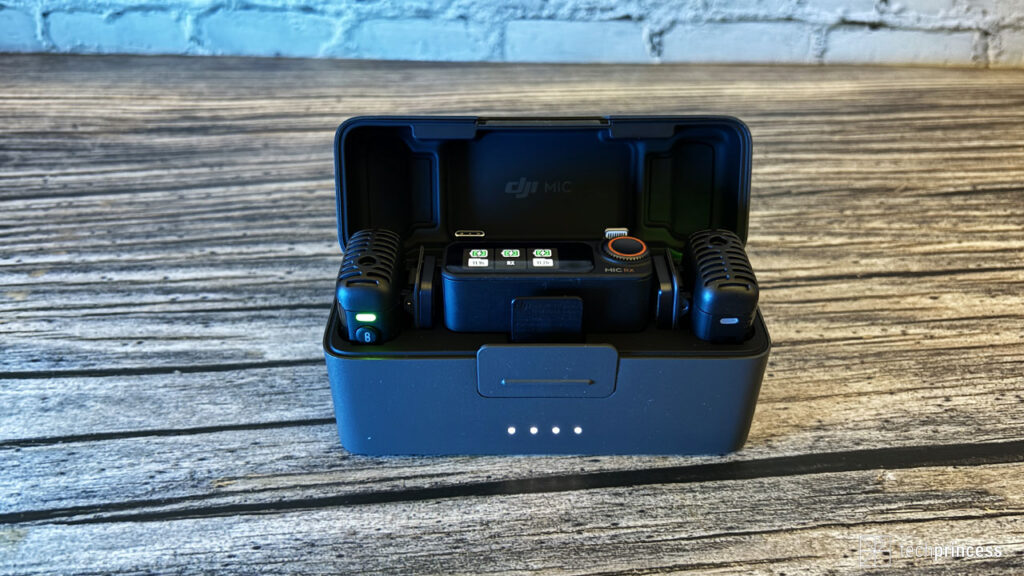

Faced with a product that already seems perfect, why did DJI feel the need to update them? To propose a new version?
Simple: because we could have done even better, widening the gap with the competition.
Beautiful but how many logos…
The first version of Chinese microphones included a small fabric bag that housed the cables, the windproof deadcats and the hard case, inside which we had the transmitters, receiver and USB-C and Lightning connectors.
Now we have a much more elegant soft case that always houses the hard case and accessories while ensuring greater order.
However, the improvements don't end there.
The charging case is more elegant and more solid while the closure is designed to guarantee a greater seal, but at the expense of size given that the length increases.
However, the 4 LEDs that indicate the battery status are unchanged, always positioned on the front, and the USB-C input for charging, which is instead at the back.
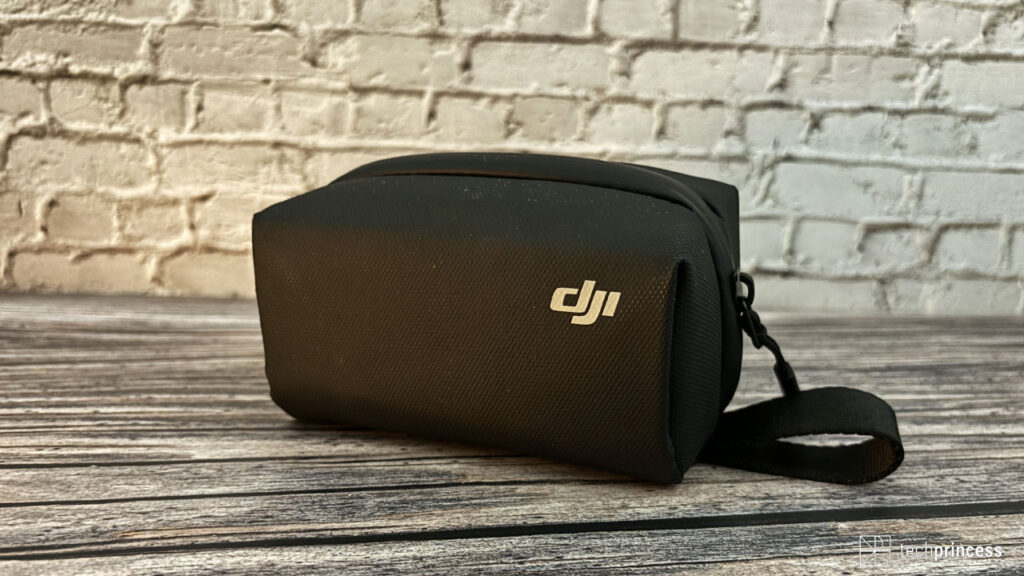

Once the case is opened we find the sides the two transmitters which reflect the original ones in shape but, here too, with obvious differences:
- more compact dimensions;
- a semi-transparent body which allows a glimpse of the internal components;
- LEDs positioned on the left and right profiles instead of in the top corners;
- keys revised in position and all circular;
- USB-C connector slightly moved.
On the back we have the clip to attach it to clothes but also a small magnet for even more comfortable and effective positioning.
For example, think about someone who wears a shirt: hooking the clip to the collar and top means weighing it down and therefore risking everything falling out of place. The magnet, on the other hand, allows you to keep it perfectly vertical.
Of course you can use the jack on the transmitters to insert an external clip.
The receiver is also different, becoming larger and with a ring that facilitates gain adjustment and use of the menu.which is also enriched with the possibility of setting the precise camera model using to speed up operations.
One note: the larger receiver gave us some issues with some cameras because it took up more space and clashed with other accessories.
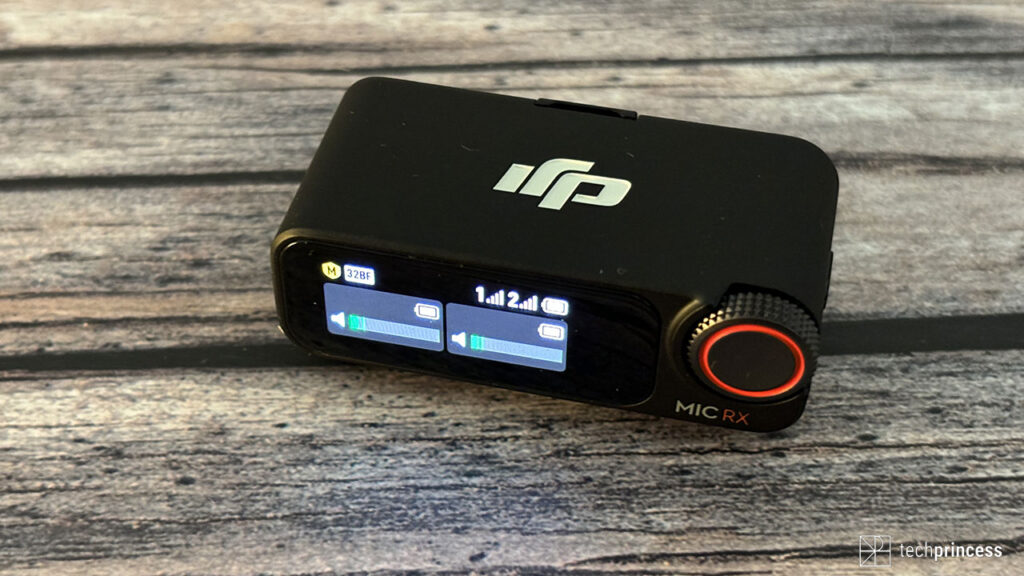

The only obvious flaw is the logos.
I'm everywhere: on the front of the microphone, on the clip, on the magnet… In short, however you put them we will see.
On the first generation, a little black gaff (on black) was enough to hide them. Now as well, but having the transparent body it will be more noticeable.
There is also a pearl white variant on which to put the white gaff but the result is certainly less discreet.
We understand that DJI probably wanted to make it evident precisely because we all did that and they instead wanted to exploit the visibility of the brand to broaden the user base but losing sight of a second important point: what happens when I want to use them for content that requires masking the brand?
Perhaps removing it from the front would have been wiser, still relying on a shape that is already widely recognisable.
DJI Mic 2 review: how do I record?
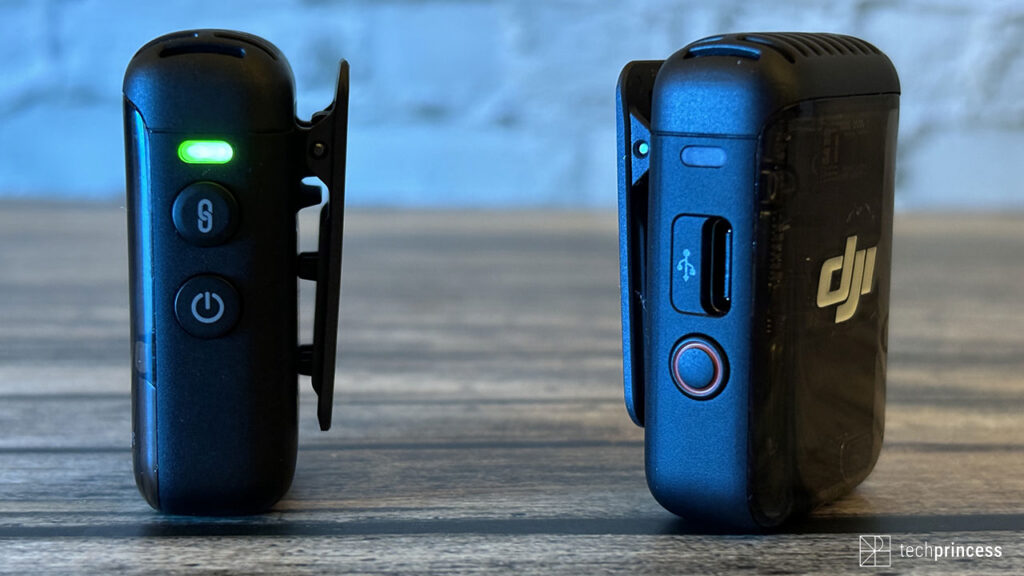

During registration you can choose 3 settings:
- Stereo, with a transmitter that records on the right channel and one on the left channel, so as to facilitate editing and balancing between two different people;
- Monoi.e. recording both channels from both transmitters;
- Mono with safety, therefore always recording both channels on both microphones but with one of these channels it removes 6 decibels compared to the other, so if you have set the gain wrong you can still have a clean recording.
You also have the option of record directly into the microphones, which is particularly useful when there is a bit of interference and you are afraid of missing something. For more you can start recording even remotely, so if you have already positioned the microphones you won't have to move them or touch them. Likewise you can activate noise reduction if you need it.
There is another plus linked to the recording mode: you can use the transmitters even in the absence of a video stream, for example to capture a noise you need, record a conference, not miss a single word of an interview and so on.
To recover tracks from 8GB memory just use the USB-C cable to connect them to a computer, and that's it.
Finally, compared to the past, it is added connecting microphones via Bluetooth, convenient with your smartphone, with an Osmo Pocket or with other compatible devices.
The field test
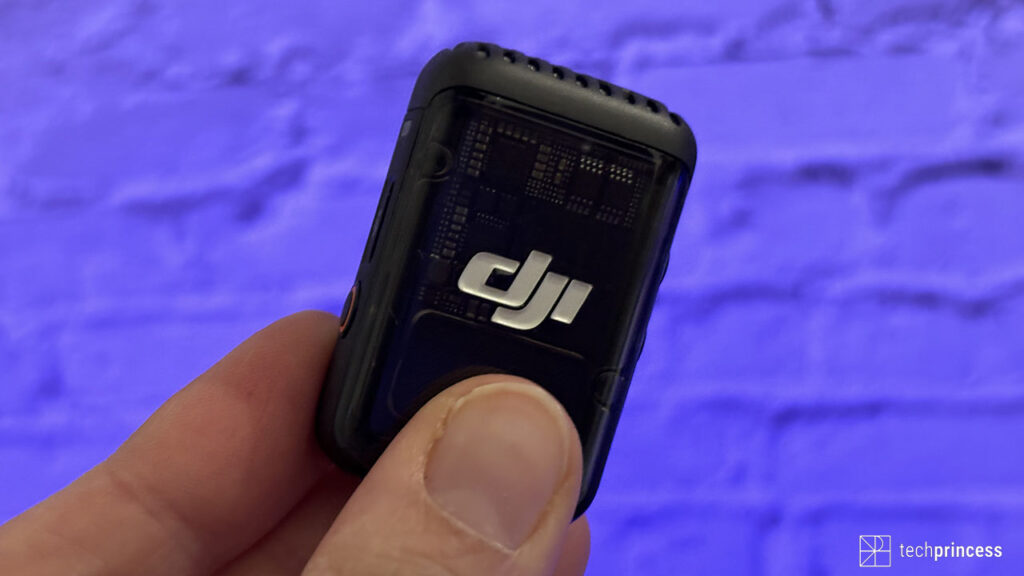

We have used these DJI Mic 2 almost everywhere and the innovations brought by the Shenzhen company can all be felt. It's not a revolution but it's an interesting step forward.
They are more comfortable to use, especially because on the one hand we can act remotely for noise reduction and recording and on the other we can easily adjust the gain with the ring.
Then there is another element that we appreciated: i transmitters connect to the receiver only after removing them, while first just open the case. The advantage is that if you leave the case open but take out only one microphone you will be sure that it will not accidentally record from the other, ruining the entire work.
On the audio front there is an improvement but it won't change your experienceif not for the presence of support for 32-bit float internal recording which helps you intervene in post-production without losing quality.
However, we leave the final judgment to you.
Here is a clip captured with the new arrivals:
Here is the one made with the first generation:
DJI Mic 2 review: conclusions
DJI Mic 2 are still the microphones to beat for content creators, video makers, bloggers and journalists.
They are comfortable, they are simple, they guarantee good audio quality with a more than decent ability to focus on your voice even in crowded environments.
The price has gone up but all in all it's understandable: now let's talk about €219 for the version with a single transmitter + receiver e €349 for our version, therefore with two transmitters + a receiver + a charging case.
However, the first generation remains very valid and allows you to save a little.







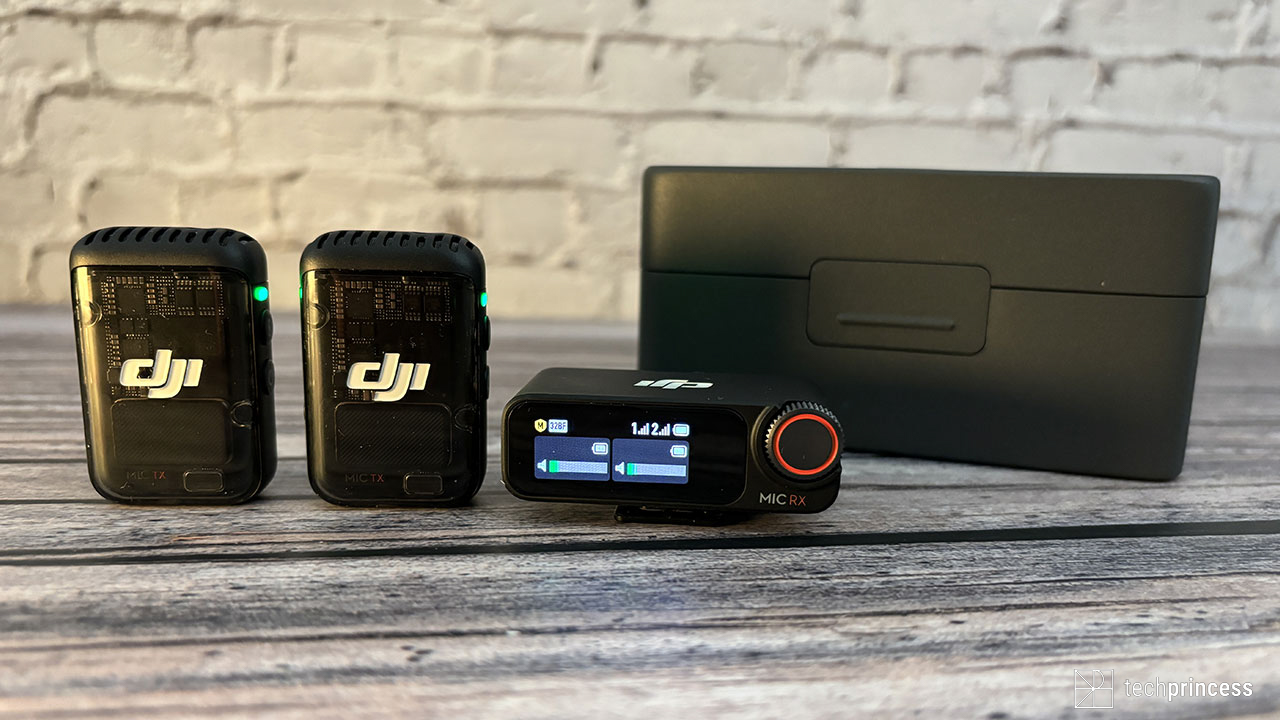








Leave a Reply
View Comments